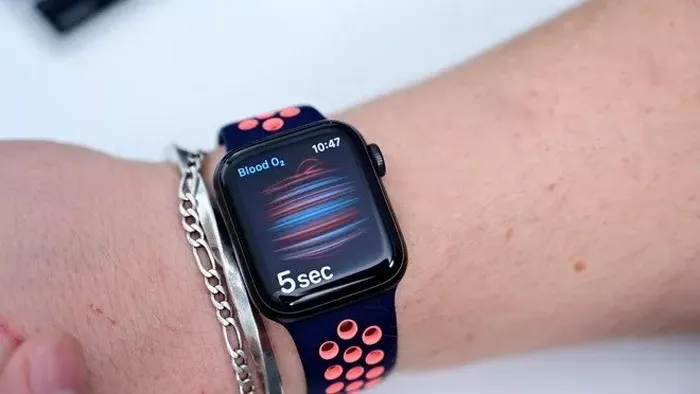In the realm of wearable technology, the Apple Watch has been a pioneering force, blending style, functionality, and health features seamlessly. One notable feature that has garnered attention is fall detection. With each iteration, Apple enhances its capabilities, aiming to provide users with a sense of security and improved health monitoring. For enthusiasts and users alike, understanding the nuances of fall detection in the Apple Watch Series 5 is crucial. This comprehensive guide aims to delve deep into the topic, providing specific, detailed, and point-by-point answers to commonly asked questions.
Does the Apple Watch Series 5 Have Fall Detection?
Yes, the Apple Watch Series 5 does indeed feature fall detection capabilities. Introduced with the Series 4 and refined in subsequent models, including the Series 5, fall detection is a significant addition to the watch’s health and safety features.
How Does Fall Detection Work?
Fall detection on the Apple Watch Series 5 utilizes a combination of hardware and software to detect falls accurately. Here’s how it works:
Sensors: The Apple Watch Series 5 is equipped with advanced sensors, including an accelerometer and gyroscope. These sensors continuously monitor the wearer’s movements and can detect sudden changes indicative of a fall.
Algorithm: Apple has developed sophisticated algorithms that analyze the data from the sensors in real-time. These algorithms can distinguish between normal activities and potential falls based on factors such as force of impact and motion patterns.
Fall Detection Trigger: When the Apple Watch detects a fall, it prompts the user with a notification on the screen. If the user doesn’t respond within a specified time frame, the watch initiates an emergency call to local emergency services and sends a message to emergency contacts with the user’s location.
How Accurate Is Fall Detection on the Apple Watch Series 5?
Apple has conducted extensive testing to ensure the accuracy and reliability of fall detection on the Apple Watch Series 5. The combination of advanced sensors and intelligent algorithms enables the watch to accurately detect falls while minimizing false positives.
According to Apple, the fall detection feature is designed to recognize falls with high accuracy. However, like any technology, there may be rare instances of false alarms or missed detections. Users should be aware of the limitations of the feature and not solely rely on it for emergency assistance.
Can Fall Detection Be Enabled or Disabled?
Yes, fall detection on the Apple Watch Series 5 can be enabled or disabled based on user preferences. Here’s how to do it:
On the Apple Watch:
-
- Open the Settings app on your Apple Watch.
- Scroll down and tap on “Emergency SOS.”
- Toggle the switch for “Fall Detection” to enable or disable it.
On the iPhone:
- Open the Apple Watch app on your iPhone.
- Tap on the “My Watch” tab.
- Select “Emergency SOS.”
- Toggle the switch for “Fall Detection” to enable or disable it.
Are There Any Requirements for Fall Detection to Work?
While fall detection on the Apple Watch Series 5 is a powerful feature, there are certain requirements for it to function optimally:
Wrist Detection: Fall detection relies on wrist detection, which means the Apple Watch must be worn on the wrist for accurate monitoring. If the watch is not worn correctly or is removed, fall detection may not work as intended.
User Response: If the Apple Watch detects a fall and prompts the user with a notification, it relies on the user’s response to initiate emergency services. If the user is unable to respond, the watch will automatically call for help.
Cellular Connectivity: For fall detection to initiate emergency calls, the Apple Watch Series 5 must have cellular connectivity. If the watch is connected to an iPhone via Bluetooth and does not have cellular capability, it can still detect falls but cannot make emergency calls independently.
See Also: What Is The Newest Apple Watch Series 2024
How Does Fall Detection Impact Battery Life?
Fall detection on the Apple Watch Series 5 utilizes sensor data and algorithms, which can have a minimal impact on battery life. However, the impact is generally negligible for most users. Apple has optimized the watch’s hardware and software to ensure that fall detection operates efficiently without significantly draining the battery.
In real-world usage, users may not notice any substantial difference in battery life when fall detection is enabled. The benefits of having this potentially life-saving feature outweigh any minor impact on battery performance.
Is Fall Detection Available in All Regions?
While fall detection is a standard feature on the Apple Watch Series 5, its availability may vary depending on the user’s location. Regulatory and certification requirements in certain regions may impact the availability of fall detection and other emergency features.
Before relying on fall detection for emergency assistance, users should ensure that the feature is supported in their region and consult local regulations regarding the use of emergency services.
Conclusion
Fall detection on the Apple Watch Series 5 is a testament to Apple’s commitment to innovation and user safety. By leveraging advanced sensors and intelligent algorithms, the watch can accurately detect falls and initiate emergency assistance when needed. Understanding how fall detection works, its accuracy, and its limitations is essential for users who rely on this feature for peace of mind and enhanced safety.
As wearable technology continues to evolve, we can expect further advancements in fall detection and other health-related features, making devices like the Apple Watch invaluable tools for monitoring and improving our well-being.

